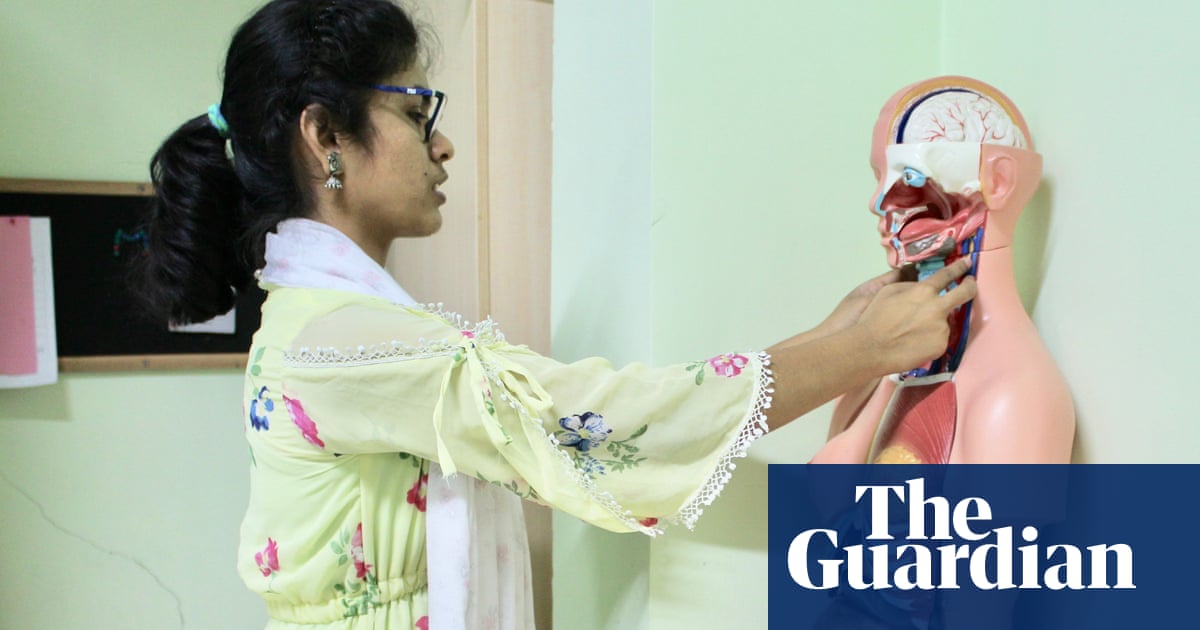
While cases among males are rare, the illness follows the same path as in women
RIYADH: Breast cancer has long been known as one of the greatest health risks for women, with incidence rates of up to 30 percent in Saudi Arabia, according to some studies.
However, less well known is that men can also fall victim to the disease.
While cases among males are rare, the illness follows the same path as in women, with cells in the breast growing abnormally, dividing rapidly and then spreading to lymph nodes and other parts of the body, often with devastating consequences.
The risks of the disease to both women and men are being highlighted during Breast Cancer Awareness Month, which is observed every October as part of an international health campaign.
Global events include walks and runs, and the lighting of city landmarks in pink — the color used by campaigners worldwide to highlight their stand against breast cancer. Joining the campaign, major buildings in Riyadh have been illuminated in pink every night, while other cities across the Kingdom have also taken part in activities to raise awareness.
Thirty female cyclists rode around the streets of Jeddah dressed in pink to highlight the importance of early detection and treatment of the illness, and to offer support to survivors. The initiative was organized by Al-Murjan investment group in cooperation with the Saudi Ministry of Health and the Brave Cyclist club.
The Saudi government and private sector also will launch a series of initiatives, including educational exhibitions, lectures, mall drives, sports activities and mammogram screenings to promote awareness of the disease.
Arab News, the leading English daily in the region, has placed a pink ribbon on its masthead to highlight the important role that screening plays in combating the devastating disease.
According to a World Health Organization 2018 report, the incidence of breast cancer among females in Saudi Arabia stands at almost 30 percent. The illness is more common among over-40s, the health ministry said.
Early detection of breast cancer can significantly improve chances of recovery in both women and men, experts say.
Dr. Osama Halaweh, a hematologist and medical oncologist at Johns Hopkins Aramco Healthcare, told Arab News: “Breast cancer is the most common cancer in women, but it does occur in men as well, though rarely. But awareness of the possibility is important. Since there is no screening for breast cancer in men, it is usually detected at a later stage when the lymph nodes are involved.”
Dr. Amer Mahmood, associate professor and molecular biologist at the College of Medicine in King Saud University, said: “Breast cancer is rare in men and usually happens in those over 60, but can occasionally affect younger men. About one in every 100 breast cancers diagnosed in the US is found in a man.”
Common symptoms of breast cancer in men a lump or swelling in the breast, irritation or dimpling of the skin, nipple discharge or pain in the nipple area, he added.
Mahmood said that early diagnosis dramatically improves the chances of a cure. Treatment typically involves surgery to remove the breast tissue. Other treatments, such as chemotherapy and radiation therapy, also may be recommended.
While the exact cause of breast cancer in men is not known, several factors increase the likelihood of developing the disease, he said.
Some men inherit abnormal, or mutated, genes from their parents, putting them at a greater risk of developing breast and prostate cancers. Other conditions that increase the level of oestrogen in the body will also add to the breast cancer risk.
However, male breast cancer is often overlooked. In 2009, the advocacy groups Out of the Shadow of Pink, A Man’s Pink, and the Brandon Greening Foundation for Breast Cancer in Men joined forces to have the third week of October labeled Male Breast Cancer Awareness Week.
Studies in Europe and the US have shown that one in eight women will develop breast cancer during their lifetime.
Halaweh said that the illness in women can be hereditary in about 5 percent of cases, so genetic testing is important to determine personal and family risk.
“Currently, there is not sufficient knowledge on the causes of breast cancer, but there is knowledge of risk factors that increase the possibility of developing the disease. So prevention and early detection remains the cornerstone of breast cancer control,” he added.
Advances in breast cancer management include systemic therapies in which drugs are used to target cancer cells wherever they may be in the body. These approaches include chemotherapy, hormonal therapy, targeted drugs and immunotherapy.
Mahmood said that cancer is a universal public health problem and a leading cause of death worldwide, claiming an estimated 9.6 million lives in 2018.
Breast cancer is by far the most prevalent form, followed by lung cancer, cervical cancer, colorectal cancer and prostate cancer. In absolute numbers, cancers in Islamic countries caused 1.02 million deaths in 2012, accounting for 17.4 percent of the total deaths in low and middle-income countries and 12 percent of the global cancer deaths, he added.
A balanced diet, and losing weight in cases of obesity may help to lower risk. Increased body weight is linked with a higher risk of breast cancer after menopause.
Studies have shown that moderate to vigorous physical activity can reduce breast cancer risk, Mahmood said.
The American Cancer Society recommends that adults get at least 150 to 300 minutes of moderate intensity or 75 to 150 minutes of vigorous intensity activity each week, preferably spread throughout the week.












